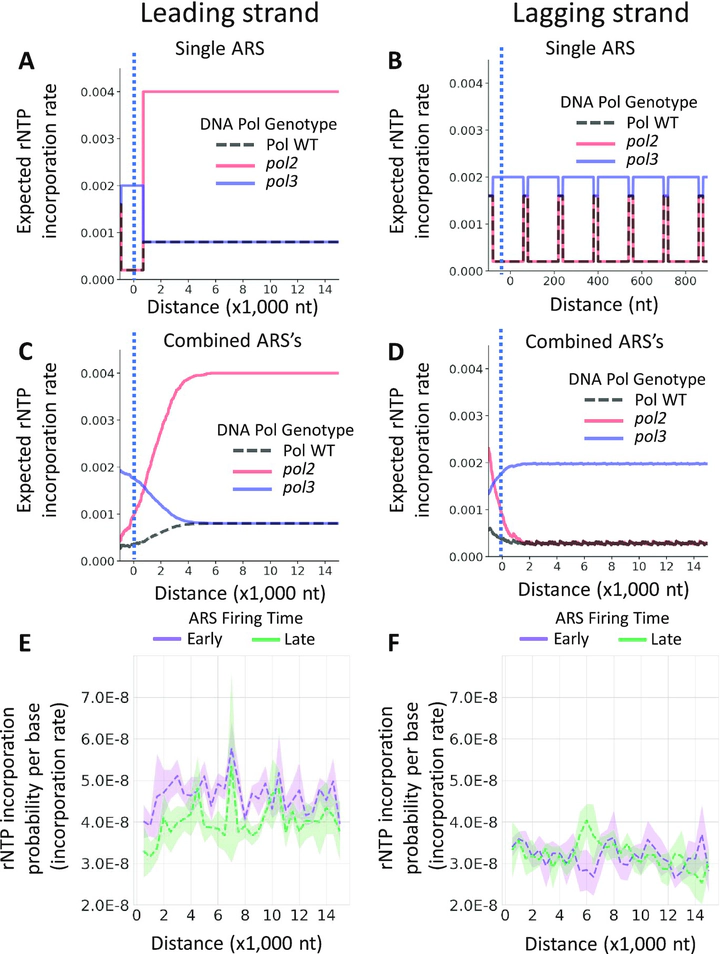Frequency and patterns of ribonucleotide incorporation around autonomously replicating sequences in yeast reveal the division of labor of replicative DNA polymerases

Abstract
Ribonucleoside triphosphate (rNTP) incorporation in DNA by DNA polymerases is a frequent phenomenon that results in DNA structural change and genome instability. However, it is unclear whether the rNTP incorporation into DNA follows any specific sequence patterns. We analyzed multiple datasets of ribonucleoside monophosphates (rNMPs) embedded in DNA, generated from three rNMP-sequencing techniques. These rNMP libraries were obtained from Saccharomyces cerevisiae cells expressing wild-type or mutant replicative DNA polymerase and ribonuclease H2 genes. We performed computational analyses of rNMP sites around early and late-firing autonomously replicating sequences (ARSs) of the yeast genome, where leading and lagging DNA synthesis starts bidirectionally. We found the preference of rNTP incorporation on the leading strand in wild-type DNA polymerase yeast cells. The leading/lagging-strand ratio of rNTP incorporation changes dramatically within the first 1,000 nucleotides from ARSs, highlighting the Pol δ - Pol ϵ handoff during early leading-strand synthesis. Furthermore, the pattern of rNTP incorporation is markedly distinct between the leading and lagging strands not only in mutant but also in wild-type polymerase cells. Such specific signatures of Pol δ and Pol ϵ provide a new approach to track the labor of these polymerases.